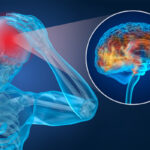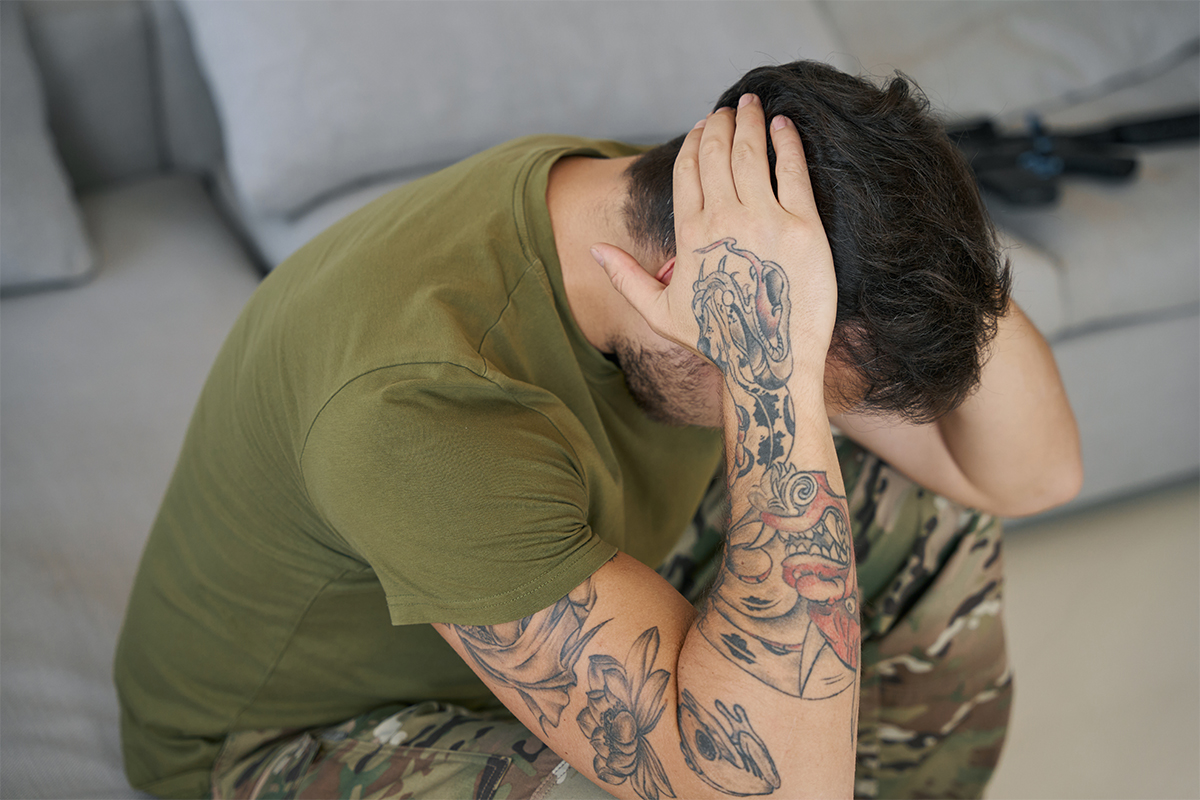If you do, you’re not alone. So do many soldiers, sailors, first responders, hurricane survivors and rape victims including Lady Gaga. (Yes, THAT Lady Gaga!) The fact is many more people have probably experienced PTSD in their lives than you think. Certainly many more than have been treated for it.
PTSD is a reaction to a level of stress that is so extreme that it literally can literally cause changes in brain structure and function. It can happen gradually over a long time or in response to a one-time event that is over in a relatively short period. Yet this condition can be life changing and even, in some cases, life destroying.
PTSD. The downside of the fight or flight response.
The condition known as a “fight or flight response” is a physiological reaction that nature has evolved to prevent the extinction of the species.1 When we’re faced with physical danger, the brain signals the body to prepare to fight off an attack or to flee from the threat as quickly as possible. Our hearts beat faster, pumping more blood and oxygen to our lungs and an increase in adrenalin enables our muscles to operate more efficiently. Once the danger is past, our bodies should be able to return to normality within a short period. However, in some cases, certain parts of the brain and their functionality are changed by this reaction. The result is the same fight or flight response can be triggered again automatically, even when there is no reason for it. It may reoccur right after the initial threat is passed or not be experienced for months or even years afterwards. Part of this response are feelings of fright and anxiety that are so acute they prevent someone from normal interaction with their environment.
According to the National Institute of Health PTSD 7.7 million American adults have been identified as having symptoms of this disorder.2 Yet PTSD may actually effect many, many more. After all, about 70% of the population have gone through a trauma at least once in their lives.2 And PTSD can mimic and is often associated with the symptoms of other disabling conditions such as depression, uncontrollable anger and more. So it may well be patients diagnosed with these other conditions are in fact, suffering from unrecognized case of PTSD.
Certain factors seem to increase the risk of PTSD.
PTSD has always been one of the dangers faced by soldiers in combat, even if it was rarely talked about or acknowledged. During WWI, the condition was known as “Shell Shock” and was known to be a brain disorder resulting from combat. During WWII, it was referred to as “Battle Fatigue.” Unfortunately, for all too many poor souls, civilians and even their fellow soldiers considered it a form of cowardliness and held those suffering from it in contempt. For the most part, this lack of understanding about the condition continued until the last decade when the military finally fully acknowledged that PTSD was caused by stress not a character flaw.
Studies indicate that soldiers fighting in the recent conflicts in Iraq and Afghanistan seem to experience PTSD more often than soldiers serving in other theaters of combat.3 Age is also an issue. Other factors are the length of deployment, severity of combat, the education level of the soldier and if they’ve had any previous exposure to trauma.3 Furthermore, soldiers under the age of 25 are seven times more likely to develop PTSD than their older comrades.4
There also seems to be a connection between the size of the hippocampus and amygdala and PTSD.5 It may be that people with smaller than normal hippocampuses are at greater risk of PTSD. On the other hand, perhaps PTSD causes the hippocampus to become smaller. More research is being done to better understand the function of these brain sections and their impact on this condition.
Cumulative Stress also causes PTSD6
Soldiers aren’t the only ones who may suffer from PTSD as the result of a sudden attack from a dangerous adversary or situation. Whenever a police officer is involved in a shooting, many jurisdictions require they undergo a psychological examination because of the trauma that may result. However, police officers and women, fire fighters and paramedics also experience stress on a daily basis over long periods. Psychologists refer to this condition as cumulative PTSD.
Cumulative PTSD is not only a reaction to the constant threat posed by potential hostage situations, drug and gambling busts, being injured by law breakers carrying military style weapons but also enduring long hours, hostile attitudes from victims as well as criminals, dealing with internal politics and the stress the job may be causing family members. All of these factors can add up to a life of unremitting, destructive stress. The symptoms may seem minor and even unrelated to the job, ranging from fatigue, twitches, profuse sweating to headaches, diarrhea and a pounding heart.6 But they are warning signs of PTSD as are depression, emotional withdrawal from loved ones and angry outbursts with friends, family and co-workers.
Recognition is growing among law enforcement professionals that more must be done to ensure there are resources to prevent the occurrence of cumulative PTSD and ensure recovery from it when it occurs. This would include better training programs for young officers and resources like the Station House Retreat that offers inpatient and outpatient trauma therapy when necessary.6
If you’ve been in an accident, gone through a hurricane, survived a mass shooting or personal assault, you could have PTSD.
Today many of us are at risk of suffering severe traumas when we least expect them. For example, in 2012 the residents of Flint, Michigan never expected to face the prospect of having their health undermined and their children’s brains damaged just by drinking water from their kitchen or bathroom tap. Yet dozens, perhaps hundreds, of hard working, men, women and children are suffering from a condition referred to by local psychologists as Flint Trauma due to the poisoning of the local water supply by a negligent state government.7
Seven years earlier in New Orleans, hurricane Katrina traumatized thousands of people, followed by a week of hell before authorities met their responsibilities of dealing with the storm’s aftermath.8 In 2012, a report was published indicating that the trauma caused by the violence of the storm and the neglect of FEMA to effectively rescue effected citizens, may never be fully assessed or dealt with. Right now, the entire population of Puerto Rico – 3 million Americans – have been suffering even worse conditions for the last two months.
Then there are the concert goers in Las Vegas, Nevada who watched their fellow audience members slaughtered by a suicidal gunman last September.9
In addition, PTSD may result from a personal assault during which the victim fears for their life. This may occur during criminal activity like a robbery. Other times the crime is rape. This is probably why women are statistically twice as likely to suffer from PTSD as men. Women are also more likely to be the target of beatings during episodes of domestic abuse. This is true even among strong, independent women as demonstrated by the fact that among 71% of women troops with PTSD, the initial cause is a sexual attack by one or more of their comrades.10
Even Lady Gaga has been a victim.11 In an open letter published on www.bornthisway.foundation, a site that she co-founded, singer Lady Gaga revealed her own struggles with PTSD. Her description of her trauma has touched and encouraged scores of fellow sufferers around the globe.
Neurofeedback is being used more and more to help people recover from PTSD.12
There are several different therapies for PTSD – various forms of psychotherapy and a range of medications to treat the worse symptoms of the condition. All of these can claim some degree of success with some patients. Ultimately, PTSD, like other brain disorders, must be treated one patient at a time since the condition is as individual as the people who experience it. Neurofeedback has been reputed to work even in cases where other therapies failed. Moreover, unlike medication, it has no side effects, offers some relief almost immediately and can be used to treat everyone – even young children.
If you think that you or someone in your family is may be suffering the effects of PTSD, we urge you to find out more about neurofeedback and how it might help to facilitate a full recovery from trauma.






